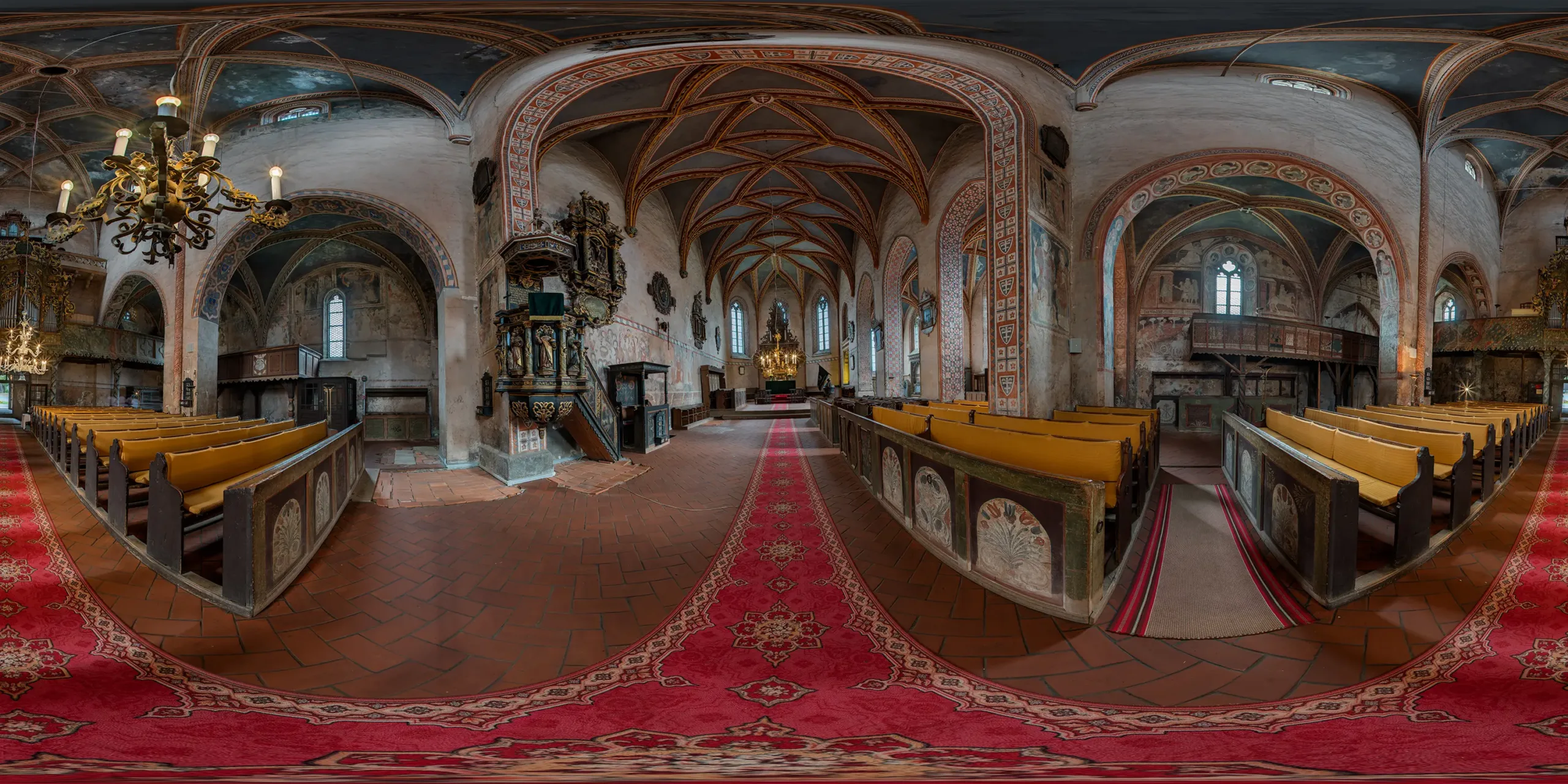
Štítnik
Štítnik, Evangelical Church of Augsburg Confession
A stunning Gothic church has been standing in Štítnik since the 13th century. Originally a small church, it was rebuilt in the 2nd third of the 14th century by the Štítnik family, a branch of the Bubek family, into a three-nave basilica. All the Gothic windows date from the last third of the 15th century, while the massive tower was only added in the 2nd third of the 18th century. Wall paintings (from several phases from the mid-14th century to the early 16th century), mostly in Italian fresco technique, originally covered all the interior walls of the church.
The interior of the church also contains a valuable cast-iron baptismal font (1454), a Late Gothic stallum (pew) from the early 16th century, a high three-tiered altar (1636) and a Renaissance organ.
Draw your attention to these wall paintings
Volto Santo
An interesting and thematically unique scene in the north side aisle depicts the Volto Santo (Holy Face). It features a painted statue from the Cathedral of St. Martin in the Tuscan city of Lucca. The painting depicts a bearded figure in a splendid robe nailed to a cross. Several legends are associated with the scene. One of them tells of the sculptor Nicodemus, who carved a statue of Christ the King out of wood, but did not have the courage to carve the face, as he did not know what the Saviour's face really looked like. At night, while the sculptor was sleeping, angels came down from heaven and finished the face. The painting includes a kneeling violinist, whom the statue helped out of poverty by dropping a golden shoe.
Seven liberal arts and two Roman saints
The symbols of the seven liberal arts are depicted in the scuntions (walls of the window opening) of the window in the south aisle of the church. The female figures in round medallions with inscribed ribbons represent the basis of medieval education: arithmetic, astrology, geometry, grammar, logic (not preserved), music (the woman with the bird's head) and rhetoric. Similar depictions of the seven liberal arts appear in 12th-century French cathedrals (Chartres, Sens, Lyon) and in Italy in the cathedrals of Siena and Pisa.
Beneath the depiction of the seven liberal arts are the figures of two saints, St. Felix and St. Adauctus. These are martyrs who lived during the reigns of Diocletian and Maximian in the 3rd century. Felix, as a Roman priest, refused to sacrifice to the Roman gods and was condemned to death. Adauctus accepted martyrdom along with him.
Jonah and the fish
A scene from the Old Testament story of Jonah and the whale appears on a wall painting in the south side aisle of the church. The prophet Jonah spent three days and three nights in the belly of a huge fish. Jonah's mission was to preach to the inhabitants of the city of Nineveh, but Jonah at first ran away from his mission in every way possible. Eventually, however, he came to Nineveh, and his preaching brought repentance to the city. Parts of the story of Jonah and the whale are also found in two other places in the church - as a relief in the superstructure of the high altar and as a panel painting on one of the epitaphs (tomb inscriptions). The Jonah motif is also in the church logo.



